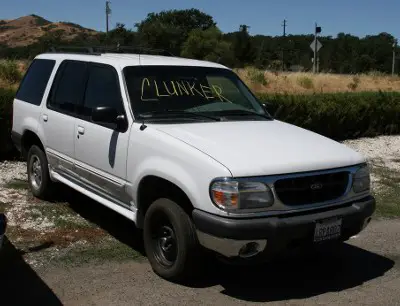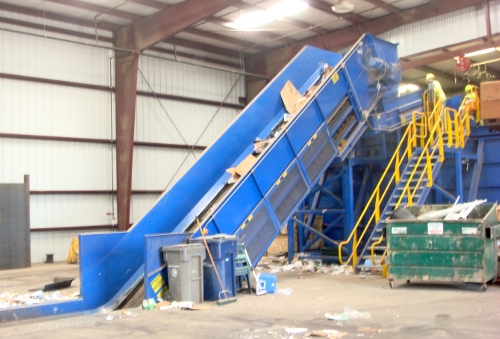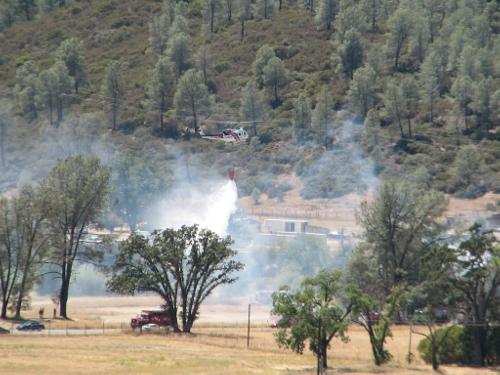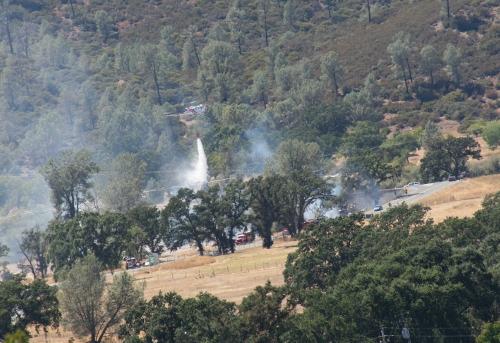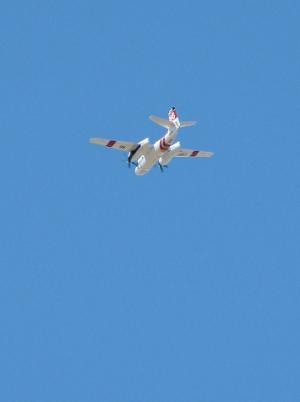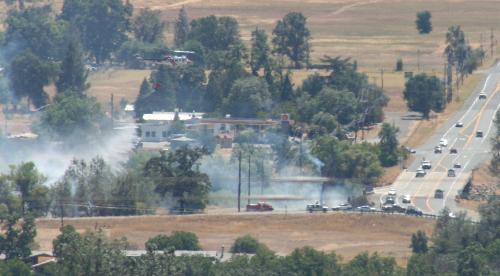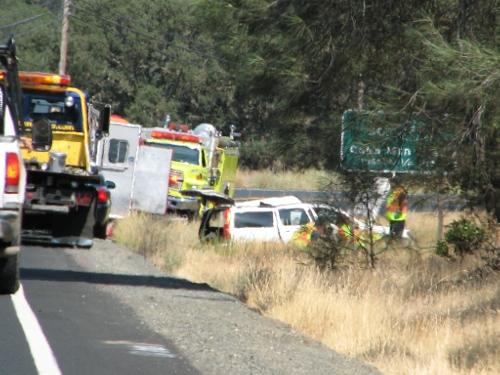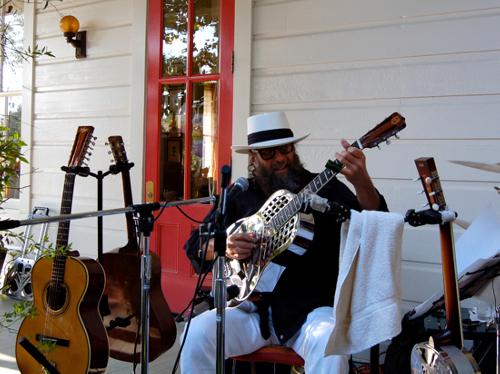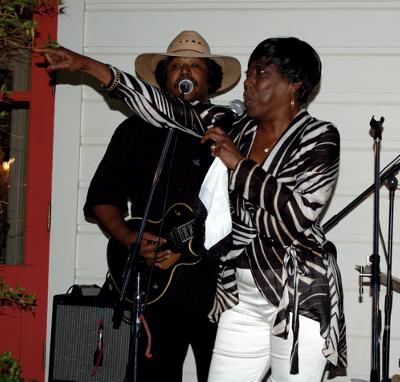LAKEPORT – A sheriff's captain who was involved in a fatal boating collision three years ago while off duty took the stand on Tuesday in a Carmichael man's trial for boating under the influence.
A crowd of about 50 people watched from the courtroom's gallery as Russell Perdock gave testimony about the crash between his Baja powerboat and the Beats Workin' II, the sailboat which Bismarck Dinius was steering on the night of April 29, 2006.
The prosecution alleges that Dinius, 41, was under the influence of alcohol and was under way without required navigation lights, and thus is responsible for the great bodily injury that led to the death of 51-year-old Lynn Thornton of Willows, who died as a result of the crash. Thornton's boyfriend, Mark Weber, owned the boat.
Dinius' defense has asserted that Perdock was driving too fast on the night of the crash, and speed would be a central theme in the questions defense attorney Victor Haltom put to Perdock.
The day began with testimony from Weber, crash witness Brian Stole, and sailboat passengers Zina Dotti and Ed Dominguez, before Perdock took the stand in the afternoon.
Perdock, 47, originally had been scheduled to testify last Thursday, but District Attorney Jon Hopkins rested without calling Perdock, who he had been notified was the focus of an internal affairs investigation and has been on medical leave since June, as Lake County News has reported.
Wearing a dark gray suit, Perdock answered questions over an hour and a half, his voice sometimes so soft it could barely be heard.
On three occasions Haltom attempted to ask questions relating to Perdock's job with the sheriff's office – specifically, his current job status, and whether the case has resulted in any actions against him or adverse consequences. On all questions Hopkins objected to the relevance and Judge J. Michael Byrne sustained.
On the day of the crash Perdock took his son – who was celebrating his birthday – to a Lower Lake pizza parlor where Perdock said he had a beer that he didn't finish.
Under Haltom's questioning, Perdock maintained he did not set foot at Konocti Harbor Resort & Spa that day, although he drove past the docks with friends James and Jordin Walker – who were with him for a nighttime boat ride – before the crash.
Haltom asked Perdock if he had received information about any of the day's earlier testimony from his girlfriend, Tami Turner, who was in the courtroom during the morning and was witnessed sending text messages. He said he only received information about scheduling because he hadn't wanted to be late.
Perdock, currently a captain, was a chief deputy at the time of the crash and was ranked second in the sheriff's office. He said his title changed due to a department restructuring.
He had an oversight role in sheriff's investigations and was the interim supervisor for the investigations unit at the time of the crash. He evaluated the performance of subordinates and his ratings could affect their pay and rank.
Everyone but Sheriff Rod Mitchell was subordinate to him at the time of the crash. However, only Mitchell had the power to terminate.
Perdock said the sheriff ordered him not to be involved in the case. “Did you comply with that order?” Haltom asked. “Absolutely,” Perdock replied.
Former Deputy Mark Hommer, who now works for the Lakeport Police Department, had sent an e-mail on Oct. 15, 2006, to records clerk Amy Valerio, communications supervisor Janell Rivera and Perdock regarding a response to a subpoena for the 911 records.
That e-mail included several recordings of 911 calls reporting the crash. Perdock said there may have been attachments, and then he said he deleted them.
In September of 2008 he provided the District Attorney's Office with the results of an investigation conducted by his insurance company. He said he only reviewed information on the case that came through a civil lawsuit, and didn't read sheriff's reports on the case.
When he met with district attorney's investigators John Flynn and Craig Woodworth in May, he suggested they look at wind conditions that night and contact Richmond Park Bar & Grill to see if the people on the sailboat had been drinking.
Questions of speed arise
He recalled giving statements to Lake County Sheriff's Boat Patrol Supervisor Sgt. Dennis Ostini and then-Sgt. Charles Slabaugh of the Sacramento County Sheriff's Office about his speed, but didn't recall talking to then-Sgt. Mike Morshed. Perdock said he estimated his speed at 35 miles per hour, although Morshed had testified to Perdock saying he was going 40 miles per hours. Slabaugh also put down between 40 and 45 in his report. Perdock said that was a mistake.
Looking at a picture of the powerboat's instrument panel, Perdock said he had given Slabaugh “my best estimate” about his speed, estimating his revolutions per minute was between 3000 to 3200.
If the speed indicators had been pointing up, how fast would the boat have been going? Haltom asked. Perdock said between 50 and 55 miles per hour. But he said he told investigators he erred in that estimate after he saw a picture of the gauges.
During testimony Perdock said his boat doesn't go on plane – or level out – until it hits around 30 miles per hour.
Perdock said he didn't see the sailboat before the impact, just a green glow of his navigation lights reflecting off of it. The crash was immediately after that. Perdock said he didn't see the sails even as his boat vaulted through the air.
Haltom had Perdock look over a time line he submitted to Flynn earlier this year. On that time line he said he put his boat in at around 8 p.m. on the night of the crash, after having spent a few hours cleaning it.
Perdock was asked if he knew Dennis Olson, formerly a security guard at Konocti Harbor, and he said yes. He also knew Joe Gliebe, the security director, but denied knowing John Walker Yashiki-Jansen, who has claimed he raced his boat against Perdock's earlier that day. Perdock said he didn't see any of them the day of the crash.
At one point during his boat ride his gas gauge dropped, so Perdock planned to go to Richmond Park to get gas. However, the needle then went back to half full.
He continued on his course around Fraser Point and into Konocti Bay, “just going for a short ride.” He was going to travel along the shoreline but along the way he spotted a white light from another boat off the bay's eastern shore, which appeared to him to be a stern light but which was a fisherman flashing a spotlight at him. Perdock He maneuvered his boat away from it to give the boat plenty of room, and the crash happened about a minute later.
After his powerboat went over the sailboat, Perdock estimated his boat stopped about 60 to 70 feet out from the sailboat, which was just visible within his stern light.
He said he didn't make a statement to the people on the sailboat that their lights were off. Dominguez, sitting in the audience, could be heard to say, “Liar.”
Perdock said he tried to get his powerboat back to the sailboat, starting up his engine. But the engine seized and quit around five to 10 feet from the sailboat.
During the crash he suffered a head injury, and then-Sgt. James Beland drove him to Redbud Community Hospital – now St. Helena Hospital-Clearlake – where his blood was drawn and he received stitches for his head injury.
The day after the crash, he and his friend, Craig Scovel, went to the sheriff's Boat Patrol facility at Buckingham Point to photograph the boats at the request of his insurance agent. He said Ostini supervised them while they did it.
He did not go to the sheriff's evidence facility. Perdock also confirmed that he was a member of the Masonic Lodge in Clearlake, along with Flynn.
Hopkins asked him if he had seen the lights on the sailboat before the impact, during or afterward. He said no.
He said he's experienced taking his boat out at night on Clearlake and differentiating between shore lights and navigation lights.
Perdock noted that he called sheriff's dispatch because if he called 911 he would have been routed to the California Highway Patrol dispatch in Ukiah. Following the crash he made several calls to Central Dispatch to give them updates on the situation.
Haltom asked Perdock if he was wearing his glasses at the time of the crash. Perdock said he wasn't. Did he have a prescription? Yes.
“Do you like the speed?” Haltom asked. “Does that do it for you, going fast in a powerboat?”
Perdock said no.
Hopkins complained that comments were being made in the audience. Byrne told the bailiff to tell people to step outside if it happened again.
Other than the 911 e-mail he was copied on, Perdock said he received no other official communications on the case. He did discuss the case with Mitchell, who informed him of the result of his blood alcohol test, which revealed zero alcohol.
Hopkins asked him about his glasses prescription. Perdock said he went for a normal eye check and told the doctor his vision gets blurry when his eyes are tired or stressed, so the doctor gave him a light prescription.
“Did you ordinarily wear them when you drove?” Hopkins asked. No, Perdock said.
Does the Department of Motor Vehicles require he wear corrective lenses? Hopkins asked. No, Perdock said.
Did he wear them for boating? No, Perdock said.
Perdock was excused just after 3:30 p.m., and admonished that he is subject to recall by the defense.
A hearing scheduled for 8:30 a.m. on Tuesday, Aug. 18, could determine if Perdock will come back to answer further questions.
Haltom filed motions last week for information regarding the internal affairs investigation and to have access to his personnel files. Perdock's attorney, Alison Berry Wilkinson, is out of state until next week. Byrne set the Aug. 18 hearing so that Wilkinson can be present to argue against the motion.
Weber returns to stand
Testimony on Tuesday had started with Weber back on the stand. He began his testimony on Friday.
Under Hopkins' cross-examination, Weber recalled getting to Lake County on April 28, 2006, the day before the crash. He and Thornton played golf that night at Rob Roy Golf Club then went to Richmond Park Bar & Grill to socialize before turning in for the night.
On race day, he was up at 6 a.m. and back to Richmond Park for a skippers' meeting. Weber raced in the half-cup which started at 10:30 a.m. and lasted until about 2 p.m., when he went back to Richmond Park. He and his team – which included Jim Ziebell and Bill Pickering – placed second in the half-cup race.
Weber said he had a 12-pack of Bud Light in his ice chest which he and others drank after the race and over the course of the afternoon. There also was a Coors Light and red wine on board, along with vodka and tequila, which had been on the boat in a cabinet for some time.
At Richmond Park that evening there was socializing and celebrating. Weber said he and Thornton ate dinner with Rob and Stephanie Green between 5 p.m. and 6 p.m.
Later, he recalled, “We were down on the dock and a big gust of wind came up.”
Weber added he and Bismarck looked at each other. “I think we may have had the same thought at the same time” about taking a sail.
Thornton had just introduced him to Dominguez and Dotti, who she had met while golfing at the Clear Lake Riviera golf course earlier that day. She asked the couple to come along on the cruise.
Before they set out, Weber said he turned on the running lights and got out of the sailboat to walk around and make sure the stern light was on. The mast light didn't work, he recalled.
They motored out about 8:30 p.m. and set off across Konocti Bay, with Dinius taking the tiller as Weber raised the main sail, followed shortly by the smaller sail. They took a port tack going out, Weber said.
As they turned around about 600 to 700 yards off Fraser Point, the wind was coming from slightly behind the sailboat, Weber said. On the way back to Richmond Park, the wind died and he took down the smaller sail because he said Thornton asked him to.
“She was calling, pretty much, most of the shots,” he said. Hopkins asked if she was determining the course. No, said Weber.
Later, when it was dark, Weber turned on the cabin lights. He had turned on the AM/FM radio a short time after leaving dock.
Hopkins asked him why he turned on the running lights. Weber said it's the law. “You're very foolish to be out there without lights.”
The boat left about dusk and it got dark quickly. No moon was visible, Weber said.
Hopkins, quoting back to Weber a statement he made on the stand on Friday, asked if he says “We've got lights, let's go” every time he sails. Weber said no.
During the sail Weber recalled going to get Dinius a beer but finding there were no more left in the ice chest. He believed Dinius had a Coors Light from the cooler before they left dock.
Dinius was at the tiller from the time Weber got up and began manning the sails when they left the dock to the time of the crash.
A bottle of vodka was found on the deck. Weber didn't remember how it got there from a cabinet in the cabin. Hopkins cited statements Weber made to Haltom's investigator on Aug. 4 that the vodka and a tequila bottle had flown out of a cabinet during the crash.
The crash occurred about 30 or 40 minutes into the cruise, Weber estimated.
Hopkins asked him why he didn't turn the cabin lights on when he turned on the running lights. He said it was light then; he turned the cabin lights on when it was dark.
Weber recalled meeting Dinius around 1999 or 2000, and meeting up with him annually at the Konocti Cup.
He couldn't remember how much he'd had to drink that night. Weber explained that he had a head injury as a result of the crash, which knocked him out for five to seven minutes. There are many things about the day that he can't remember.
Weber said he also couldn't remember talking to Sgt. Dennis Ostini at the hospital in the early morning hours of April 30, 2006.
Hopkins put up a map of Konocti Bay and announced that a juror had brought laser pointers for he and Haltom to use. “Just don't use them against each other,” Judge Byrne quipped, which drew laughter from the roughly 20 people in the gallery during the morning session.
Witness saw lights converge
After an hour on the stand Weber was excused. He remained in the courtroom as Brian Stole came to testify.
Stole and his fiancée were at Bayview Estates next to the shoreline when he noticed Perdock's powerboat. “I did notice that there was a boat going too fast across the water.”
He said he saw the lights on the powerboat, which he estimated was going about 50 miles per hour, and also heard its motor. Stole said he saw the powerboat's lights and the lights on another object converge and then heard a collision.
Stole noted under Hopkins' cross-examination that “usually the faster the boat goes the louder the engine is going to run.” Hopkins asked if that sound figured into his speed estimate. Stole said yes.
When the boats collided, it sounded like “a stick of dynamite going off. It was pretty loud,” Stole said.
Hopkins questioned the different statements Stole had made to Haltom's investigators and district attorney's investigators. In two separate interviews, he stated he believed he powerboat was going 45 miles per hour, but he told Haltom it was going between 50 and 60 miles per hour. Hopkins also questioned different light colors Stole had attributed to the boats' running lights, which varied between green and red, white and yellow.
At one point Stole told one of Hopkins' investigators that he didn't know if the powerboat hit a boat or a dock. He'd also told a district attorney's investigator initially that he thought the crash was five to 10 miles away, but later said he thought it was 500 yards away. Stole said he'd had nothing to drink that night.
Sailboat passengers recount deadly crash
Dotti, who along with her fiance, Dominguez, went out on the sailboat that night, testified about meeting Thornton on the golf course that morning before later meeting her, Weber and Dinius at Richmond Park, where they were asked to go on a sail. Dotti said the sail had to be a short one, because she and Dominguez were meeting his parents later for dinner at Konocti Vista Casino.
It was still light when they left, and Dotti recalled they didn't use the motor going out. She remembered the cabin light being on; there was light illuminating grass and tules in the water, and they could see each other on the boat.
In response to Paige Kaneb, an attorney with Dinius' defense team who questioned her, Dotti said they weren't partying on the boat, but were talking about children and Thornton's golf game.
Dotti said they saw no other boats on the water that night. She was sitting on the sailboat when she heard something. It was a powerboat that “sounded like it was going fast.” She said Dominguez told her she didn't finish her sentence before the collision.
“Total chaos” followed, she said.
She remembered Perdock shining the light on them and asking if everyone was on the boat. Dotti recalled them yelling for 911.
Dominguez was giving Thornton cardiopulmonary resuscitation on the boat until the paramedics took over on shore.
Dotti, who had an injured leg and was covered with blood, said she and her fiance weren't treated at all for their injuries when they got to shore. “Nobody even looked to see whether we were hurt,” she said.
A deputy later questioned them about where they had been during the entire day. “It sounded like they already made a decision whose fault it was,” said Dotti, referring to the sailboat.
They asked for a ride back to Richmond Park and a deputy said they didn't have enough cars. Later they did get a ride from a deputy back to the restaurant, where their car was parked.
Hopkins asked Dotti if she felt the deputy's questioning was inappropriate. “Yes, I did.”
She'd been asked if she had drinks earlier in the day. “You thought it was inappropriate they determine your perception as a witness was unaffected by alcohol?” Hopkins asked.
Dotti replied that she felt they should have checked on their physical well being.
She said she had a vodka cranberry at the bar before leaving on the sailboat. Thornton went in to sing a karaoke song before the cruise. Dotti said Weber and Thornton were excited about his second-place finish in the race that day.
On the cruise, she recalled Weber explaining what he was doing as he was working on the boat. Later, after the cruise was under way, she said he got Dinius a Coors Light, got wine for Thornton and Dominguez, and brought out the vodka for her. But there was nothing to mix with it, so she didn't drink any, and she said he left the bottle out on a bench.
For the most part, the conversation was between Dotti, Dominguez and Thornton. Dotti said Weber “was pretty quiet. He was running the boat.”
She remembered seeing stars but not the moon. Dotti estimated about 45 minutes passed before the start of the cruise and the crash.
She didn't see the powerboat before the crash; she only heard it, noting it sounded like the boat was accelerating. It happened so fast that she didn't see the collision.
When Perdock was asking if people were in the water, at first they weren't sure, said Dotti. The mast had fallen over and Dinius, Weber and Thornton were underneath it, with both men having collapsed on top of Thornton. They threw the sail and mast over the side of the boat so they could pull the injured out from under it.
She said Perdock asked if they needed a first aid kit. “More than a first aid kit was needed at that point,” she said.
Dotti sat at the tiller as the boat was towed in, getting instructions on how to steer from people on another boat. She recalled holding Thornton's hand on the trip in to shore.
Dominguez followed Dotti to the stand. He and Dotti had met Thornton on the fourth hole of the Riviera golf course that morning and played about six holes with her before agreeing to meet her later at Richmond Park.
The only boat light he could remember that night was the cabin light, but he said he didn't look for the others. Darkness fell quickly after they left on the cruise. He said he didn't recall seeing a spotlight that fisherman Colin Johnson said he flashed at the boat.
After the crash Dominguez and Dotti were the only ones still sitting up, while the rest had been knocked to the deck. Someone from the powerboat said, “You didn't having your f'ing lights on.”
He found Thornton under the sail, with Weber and Dinius lying across her. Dinius was having trouble breathing. Dominguez tried to prevent Weber from seeing Thornton “because she didn't look good.”
“She had a pulse at first,” he said, then he lost it as he did CPR on her.
Hopkins asked him about a statement he had made in the preliminary hearing about Dinius being “hammered up.” Dominguez said he meant that Dinius was looking like he was happy and having a good day.
“If I would have thought he was drunk I would never have gotten on the boat with him, if that's what you're implying,” Dominguez said to Hopkins.
When he was first invited to sail, Dominguez said he wasn't concerned because it was a short trip. Someone suggested the worst case scenario would be the boat tipping over and all of them having to swim back to shore, which he said everyone laughed at at the time.
Just before the collision itself, he heard a motor, and he wasn't sure if it was out of the water running. The collision happened so quickly he wasn't sure he saw the powerboat, although he said he can see it every time he closes his eyes.
The defense will continue presenting witnesses on Wednesday morning at 9 a.m.
E-mail Elizabeth Larson at This email address is being protected from spambots. You need JavaScript enabled to view it. .

 How to resolve AdBlock issue?
How to resolve AdBlock issue? 